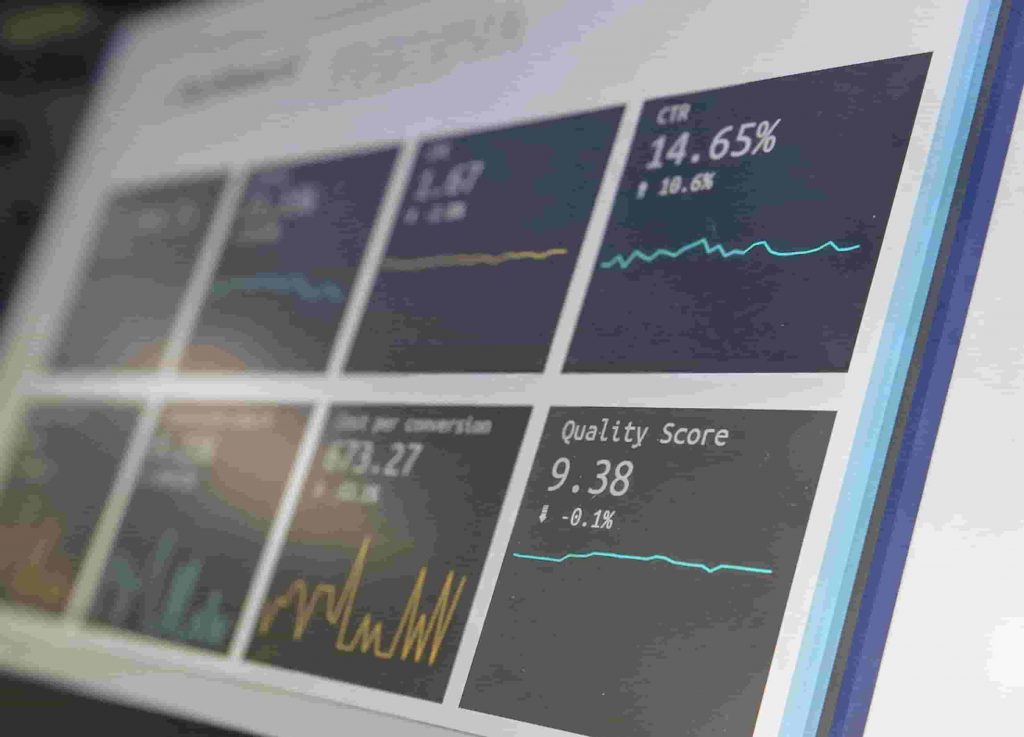The Complete Guide To Creating Your Sales Pipeline
A well-defined and structured sales pipeline can make all the difference to the success of a startup as it defines the methods used to transfer leads into customers.
But when your sales pipeline isn’t completely optimized, you can wave goodbye to lots of your new leads. We’ve all been there, where you’re finding lots of new leads for your business, but they’re just not converting.
If that’s what’s happening in your business right now, or you don’t have a defined sales pipeline yet, don’t worry! This article will provide you with the techniques to create and optimize your sales pipeline in no time.
If you’re more of a watcher than a reader, I’d recommend this video by Matt Easton, which provides a great introduction to how you can improve your sales pipeline.
What is a Sales Pipeline?
A sales pipeline is a visual way of tracking potential customers as they move through the process of buying your product. Typically depicted as a funnel, the sales pipeline is divided into stages that reflect the various steps in a company’s sales process.
The width of the funnel represents the number of clients in each stage, meaning that as you go through the process, you can expect to lose some of your prospects.
What Are The Sales Pipeline Stages?

While each business may have slightly different stages in their sales pipeline, the general stages are:
- Prospecting / Lead Generation: Fresh leads enter the funnel at the top of the diagram
- Qualification: Leads are then qualified to make sure they fit with the target audience that the business is aimed at
- Proposal: The proposal phase is where customers are first connected with the offer from the business
- Post-Proposal: The post-proposal stage is where a relationship is built up with the client to make them more comfortable with the sale
- Commitment: The commitment phase is where the client finalizes the details of the purchase before…
- Sale: The sale is completed!
While each business may operate its sales pipeline in a slightly different way, the general overview of the pipeline is the same.
What’s The Difference Between a Sales Pipeline and a Sales Funnel?
While a sales pipeline and a sales funnel are largely similar, there’s one distinct difference between the 2.
The sales pipeline serves as a visual representation of the salesperson’s view of the buyer’s journey, capturing the progress of open deals from initiation to closure.
On the other hand, the sales funnel provides a visual representation of the prospect’s perspective in the buyer’s journey. The funnel shape symbolizes how qualified leads move through the sales process, starting from the top and progressing towards the bottom of the funnel.
What Do I Need Before I Build a Sales Pipeline?

When constructing your sales pipeline, it is essential to know the specific details about your company, sales team, existing customers, target audience, target market, product, and pricing.
In addition to these basic items, you’ll also need:
- A comprehensive list of prospective buyers: Compile an up-to-date list of potential customers who fit within your business’s target market
- Clearly defined sales process: Document any steps you currently perform to engage with clients and any ideas for improvements.
- Revenue targets: Set realistic and measurable revenue targets that align with your business objectives. These targets will guide your sales efforts and help you track your progress as you move through the sales pipeline, so they’re really important.
- Scheduled meetings: If you’re not a 1-man-band, make sure to set up regular meetings with your sales team to track the progress of your pipeline improvements.
How To Build a Sales Pipeline
Now that you’re prepared with your business identity, list of current prospects and sales process, it’s time to start work actually building your sales pipeline.
Step 1: Organise Your Prospects
As you’ve got a list of prospective buyers (or an idea of who they’ll be if you’ve just launched your startup), you should spend some time organising them into categories based on the different processes that you’ll need to follow to secure a sale from them.
For example, if I were creating a sales pipeline for a bakery, I’d organise my prospective clients into the following 3 sections:
- In-person customers (i.e. people walking into my bakery and buying a baguette)
- Large phone orders (i.e. buying a custom birthday cake, or delivering 50 focaccia for an office party)
- Repeat orders from businesses (i.e. providing 250 pre-made sandwiches for the local cafe each week)
You don’t want too many of these categories, as your sales pipeline will become a mess, but make sure that each category is defined enough so that it can have very clearly defined steps for securing the sale, which is what we’ll do in the next step.
Step 2: Establish Your Sales Pipeline Stages
As your sales pipeline will be used every day, you want to make sure that it’s clear and specific so that all of your team are on the same page and can handle any sales event professionally.
To do this, for each of the client categories you defined in Step 1, you need to define the stages of the pipeline and the exact steps to get between each stage.
Example Sales Pipeline for a Bakery
If we focus on the repeat orders from businesses category from our bakery example in the last step, we could define a simplified set of pipeline steps and processes like so.
Prospecting
Identify local restaurants and cafes in the surrounding area of the bakery
Qualification
Ensure that the restaurants and cafes meet the following criteria:
- They serve food
- They’re in a 5-mile radius
- They’re not already supplied by our partner bakery
Proposal
Connect with the potential customer, to propose a business partnership. Discuss the benefits of working with our bakery and offer a trial of 100 goods to see how well they sell.
Post-Proposal
Once the trial has been completed, the same sales agent will get back in contact with the potential customer, ask how the trial went and try to secure a final order.
Commitment
The client agrees to buy an amount of baked goods from the store on a weekly basis. A short lead time of a week is given to allow the bakery to prepare the goods to start the contract.
Sale
The client receives and pays for their first batch of baked goods. The contract is signed and the client has travelled through the sales pipeline.
Step 3: Refine Your Pipeline
Now that you’ve created your sales pipeline, you’re in probably the most important stage yet, monitoring and refining.
You need to keep a close eye on your pipeline at all times, especially in the weeks and months following a change, to make sure that it’s operating correctly.
If you notice any of the following, it’s probably worth analysing the problem, and updating the pipeline accordingly:
- Lots of potential customers getting stuck in one stage of the pipeline
- Lots of potential customers leaving the pipeline at one stage
- The sales team finding a step redundant / having to add an additional step often
In my experience of creating successful sales pipelines for my businesses, I’ve never had it quite right on the first attempt. I would even go as far as to say that I never got it perfected because there are always more optimizations that you can do. While working on my first business, Code Poster, I came up with the following quote for sales pipelines:
If you think your sales pipeline is well optimized, you need to add more monitoring.
Tom Farmer
The key to discovering what you need to work on next in your pipeline is to have great metrics surrounding your pipeline. I’d recommend as a minimum measuring customer loss and time in each stage of the pipeline.
How Can I Improve My Sales Pipeline?
If you’ve already got your sales pipeline up and running or are looking for some guidance with Step 3 of building your sales pipeline, then you’re in luck.
In this section, I’m going to give you the 9 things I look to improve on my sales pipeline.
Focus on Inbound Leads
While outbound lead generation (reaching out to others who may not know about your brand) can be an effective tool to get users into your sales pipeline, it often requires a lot of effort and resources to generate leads.
In my oppinion, inbound lead generation techniques (such as SEO, pay-per-click advertising, and creating blog content) are a great and often underused alternative to getting more customers into your pipeline with less effort.
I love inbound leads as they:
- Are typically more qualified
- They’re more likely to buy
- Require a lot less time and effort to find and convert
- They’ve already shown an interest in my company, so they already trust me to an extent
All of this means, it’s much, much easier to sell them a product.
If you’re wanting to play the long game (which I’d whole-heartedly recommend), then get started on improving your site’s SEO by writing some new blog posts on your site. I have a 5-part series on getting started with SEO for your business here if you’re interested.
Alternatively, if you’re looking to go the quicker route, paying for advertisements in areas where your target market hangs out, such as Google or Facebook ads would be a great way to get more people into your sales funnel quickly.
Qualify Leads Early
A method that I’ve used to improve my sales pipeline’s perfomance time and time again is to bring forward my lead qualification step.
As a reminder, lead qualification is where you make sure that a prospective customer fits with your target audience and other criteria to be a customer of your business.
I’ve found that often you can qualify a lead while they’re entering your pipeline on the first step. This is easiest done when you’ve got very clear, measurable criteria for what each of your customer categories.
These factors can include:
- The size of the potential opportunity
- The client’s budget
- The prospect’s level of authority to make purchasing decisions within their company
- The prospect’s timeline for making a purchase
To objectively measure this, you can use a practice called lead scoring, which involves assigning points to leads based on their level of engagement and fit with your ideal customer criteria.
Customers with the highest score are worth spending the most time pitching to, and customers with a low score should be focussed on less.
Sales automation tools such as CRM (customer relationship management) software can also help you to streamline the lead qualification process and ensure that all leads are properly tracked, so they might be worth looking into if your sales pipeline is getting too complex.
Close Early

At the end of a product demo, the focus should be on closing the sale rather than scheduling additional calls. This approach both saves time and provides a clear indication of the prospect’s level of interest in the product.
I’ve found that dropping in questions such as “Does this product sound like a good fit for your needs?” or “What do you see as the next step in the process?” at the end of calls often cause the potential client to express their level of interest.
If the potential client indicates that they are ready to progress with a sale, it is important to take action immediately by providing a clear process for completing the sale. This can include scheduling a meeting to discuss pricing or sending an email with pricing information.
Follow Up
Follow-up emails are an essential part of successful sales pipelines as they help to maintain communication with potential clients and keep them engaged throughout the sales process.
By following up with potential clients after a call or a long period of little communication, salespeople can reinforce the value of their product, address any concerns or objections, and move the sales process forward to completion.
Follow-up emails are particularly useful in cases where potential clients are not ready to make a purchase decision. By sending regular catchup emails, salespeople can build trust with the potential user and remind them of the product, increasing the likelihood of a sale.
Create a Knowledgebase
Having a knowledge base of common objections to your product and responses that have worked in the past can be an invaluable resource for your sales team.
For example, if prospects often express concerns about the price of the product, the knowledgebase could include strategies for addressing those concerns, such as highlighting the value and return on investment of the product.
By sharing this knowledge with the entire team, salespeople can draw on the collective experience of previous customer questions, making it quicker and easier to handle objections and close more deals.
It’s also worth noting that if a question comes up multiple times, it’s probably also worth updating the sales pipeline to explicitly call out the answer to these questions to further optimize the process.
Seize The Data!

Collecting data about your startup’s sales pipeline is essential for understanding and optimising your sales performance.
By tracking key metrics and analysing the trends in your sales data, you can gain valuable insights into the effectiveness of your sales process and make data-driven decisions to increase your overall sales.
Collecting metrics about your sales pipeline involves tracking key data points throughout the sales process. Some common data points include:
- Number of leads: The total number of potential customers that have expressed interest in your product (through inbound and outbound leads)
- Conversion rate: This metric measures the percentage of leads that convert into paying customers
- Number of demos: The number of demos booked and the number of demos attended
- Sales cycle length: The amount of time it takes for a lead to move through the entire sales process
- Deal size: The average value of a closed deal
- Retainment: How long are users retained within the system and whether they churn quickly
After collecting and analysing the above data points, you should be able to identify the weakest points in your sales pipeline. These points then need to be improved to ensure that your startup becomes a million-dollar business.
Offer Trials
When offering product trials, a business needs to strike the right balance between providing enough access to the product to allow a potential customer to fully evaluate it, while also protecting the value of the product and ensuring that customers are committed to purchasing.
For shorter trials (lasting a few days to a few weeks), offering the product for free can be an effective way to encourage customers to test the product without committing to purchase beforehand.
I’ve found this to be particularly effective for smaller businesses or individuals who may be hesitant to invest money into a product without first fully understanding its value.
Larger companies on the other hand often need longer trial times in order to fully evaluate the product for the business as a whole.
In these cases, it may make sense to offer a paid trial, where the customer pays a reduced rate for an extended period of access to the product.
This can help to ensure that the customer is fully committed to the trial process and is not using the trial to gain free access to the product.
Raise Your Prices
Many companies, especially those that are relatively new to the market, offer their products at a lower cost than is necessary.
While it may seem like a good idea to under-price your competitors, a product with a lower price can often be seen as not offering as much value as higher-priced products.
What’s more, higher prices mean that a customer is worth more to the company, meaning that more expensive and effective marketing approaches (such as pay-per-click ads) can be used to bring more customers in.
Sell Annual Plans
After a potentially long sales process, it’s much more beneficial for your company to receive a yearly payment upfront, rather than receiving monthly payments.
Yearly plans help your company to recuperate some of the customer acquisition and onboarding costs more quickly, while also providing greater predictability in terms of revenue.
By promoting an annual payment option, SaaS companies can incentivise customers to commit to a longer-term relationship with the product, which can help increase customer retention and reduce churn.
This is particularly effective for products that require a significant investment of time and resources to set up and integrate into a customer’s workflow, as it can help ensure that customers are fully committed to the product and are not likely to abandon it after just a few months.
How Do I Know When To Move A Client To A Different Stage Of The Pipeline?

Certain stages in the sales pipeline can be treated as a checklist, where once a specific activity like making contact or scheduling a meeting is completed, it’s time to move the deal to the next stage.
However, other stages, such as lead qualification, may not have clear-cut rules for advancing a deal. To avoid confusion regarding the appropriate stage for a deal, there are a few actions you can take:
- Provide clear and specific criteria for each stage, particularly for potentially ambiguous stages like lead qualification. Define the conditions that must be met for a lead to be considered qualified.
- Consider breaking down broader stages into smaller, easily manageable sub-stages. For example, if you have a stage called “Making Contact,” you could divide it into three distinct stages: “First Contact,” “Set Meeting,” and “Presentation.” This granularity allows for clearer progress tracking.
- Consider streamlining and consolidating stages. While the pipeline is an essential tool, it should not consume all of your sales reps’ time and effort.
How Can I Analyse The Success of My Sales Pipeline?

Your sales pipeline encompasses every email, meeting, or call involved in a sales cycle, each serving as a tactic to successfully close a sales deal. Conducting sales pipeline analysis allows you to gain valuable insights into your pipeline, identifying prospects who are ready to make a purchase and those who require further persuasion.
To perform an effective sales pipeline analysis and obtain a clear visualization of your pipeline, it is essential to track specific key performance indicators (KPIs). In the following section of this article, we will provide a detailed explanation of these metrics.
Conversion Rate Per Stage
An essential metric for evaluating the performance of your sales pipeline is the conversion rate per stage. As the sales cycle consists of multiple stages, it is crucial to assess the conversion rate at each stage. Regularly monitoring this metric provides insights into the effectiveness of your sales pipeline and can highlight any potential shifts in customer behaviour.
Your CRM software can typically calculate the conversion rate per stage, making it easier to track. However, it is advisable to also examine historical data sets to compare lead conversion rates over time. Utilizing a comprehensive CRM pipeline report can assist you in analyzing these conversion rates in-depth.
By assessing the conversion rate per stage, you can:
- Gauge Sales Pipeline Performance: Understand how well your sales pipeline is performing by identifying the conversion rates at each stage. This analysis helps pinpoint areas where improvements or adjustments are needed to enhance overall pipeline efficiency.
- Identify Potential Customer Shifts: By closely monitoring conversion rates, you can detect any potential shifts in customer behaviour or preferences. This information allows you to proactively adapt your sales strategies and address emerging trends in the market.
- Track Progress Over Time: Comparing historical conversion rates provides valuable insights into the progress and effectiveness of your sales efforts. It enables you to identify trends, patterns, and areas where adjustments have resulted in improved conversion rates.
Regularly reviewing and analyzing the conversion rate per stage empowers you to optimize your sales pipeline and make data-driven decisions that drive better outcomes.
Velocity
One important metric that provides insights into the health of your sales pipeline is the sales pipeline velocity. It measures the rate at which money flows through your sales pipeline on a daily basis and is influenced by the speed at which leads are converted. Understanding and monitoring this metric is crucial for assessing the effectiveness of your sales process and identifying leads that require more attention.
Calculating the sales pipeline velocity is straightforward using the following formula:
Sales Pipeline Velocity = (Total Value of Sales Deals * Number Of Deals) / Average Sales Cycle Length
To illustrate with an example, let’s assume you have 100 sales deals in your pipeline, with an average deal size of $2000. If your average sales cycle is 10 days, the calculation would be as follows:
Sales Pipeline Velocity = (100 * $2,000) / 10 = $20,000
This means that on any given day, approximately $20,000 worth of deals pass through your sales pipeline.
It’s important to note that a higher value for this metric is generally more favourable. It indicates that deals are progressing swiftly through the pipeline, resulting in faster revenue generation. Conversely, a lower sales pipeline velocity may suggest bottlenecks or inefficiencies that need to be addressed to ensure a healthy sales pipeline.
By regularly calculating and monitoring the sales pipeline velocity, you can gain valuable insights into the pace of your sales process, identify areas for improvement, and take appropriate actions to optimize your pipeline’s performance.
New Qualified Leads Per Week
To initiate your sales pipeline analysis, it is crucial to track the metric of qualified leads. Without qualified leads in your sales pipeline, it becomes challenging to close more sales deals. Qualified leads refer to prospects who are ready and willing to make a purchase, thereby contributing to higher conversion rates.
A strong sales pipeline requires a consistent influx of new leads on a weekly basis. By regularly monitoring this metric, you can gain visibility into the following aspects:
- Effectiveness of Sales Activities: Evaluate how successful your sales activities and initiatives are in generating new leads. This analysis helps determine the efficiency of your strategies in attracting potential customers.
- Lead Volume for Revenue Goals: Assess whether your lead volume is sufficient to meet your revenue objectives. By comparing your lead generation efforts to your revenue targets, you can identify any gaps that need to be addressed.
- Balance between Lead Quality and Quantity: Examine whether your sales representatives are compromising lead quality while focusing solely on lead quantity. It is essential to strike a balance between the two to ensure that your pipeline consists of high-quality leads that have a higher likelihood of converting into customers.
By tracking and analyzing these metrics, you can optimize your sales pipeline and make informed decisions to drive better results.
Per-Stage Pipeline Value
Gaining visibility into the overall value of your sales pipeline is crucial. This metric involves calculating the total value of all deals at each stage of the pipeline, providing an understanding of the total pipeline value.
A higher overall sales pipeline value is generally desirable as it signifies greater revenue potential. It is important to track this metric regularly to identify significant revenue generation opportunities. However, it is essential to maintain realistic expectations, considering that not all sales deals will close simultaneously.
To obtain a more detailed perspective, it is recommended to calculate this metric on a stage-by-stage basis. By dividing your sales cycle into three stages, such as leads, opportunities, and number of meetings booked, you can assess the value of each stage individually.
As you progress through your sales pipeline, you may observe a decline in the overall sales pipeline value. This is a normal occurrence and indicates that your prospects are moving closer to finalizing a business deal. By monitoring the overall sales pipeline value and its stage breakdown, you can gain insights into the progression of your sales process and identify areas where additional focus or support may be needed.
Sales Pipeline Template
Sales pipeline templates provide businesses with the means to create and monitor their pipelines using spreadsheets or software.
If you’re currently looking for a sales pipeline template, then check out HubSpot’s free sales pipeline, which I’ve used for many of my startups over the years.
FAQs
What Is a Sales Pipeline and How Do You Build One?
A sales pipeline is the structured framework that guides customers through a company’s sales journey, encompassing lead generation and qualification, closing deals, and post-purchase customer engagement.
Which Stage of the Sales Pipeline is Where a Company Identifies Potential Customers?
The stage of the sales pipeline where a company identifies potential customers is typically referred to as the “Prospecting” stage.
What Can Happen if a Company Doesn’t Utilize a CRM or Manage Their Sales Pipeline Appropriately?
If a company doesn’t utilize a Customer Relationship Management (CRM) system or manage their sales pipeline appropriately, several negative consequences can occur:
- Missed Sales Opportunities: Without a CRM or proper pipeline management, sales leads and opportunities may fall through the cracks, resulting in missed sales. Important interactions and follow-ups might be overlooked, leading potential customers to choose competitors.
- Inefficient Sales Process: Managing leads, tracking customer interactions, and prioritizing prospects become challenging without a CRM. Sales teams may waste time on unqualified leads, leading to a less efficient sales process.
- Poor Customer Relationships: CRM systems help in maintaining detailed customer profiles, communication history, and preferences. Without them, companies may struggle to build and maintain strong customer relationships. This can result in lower customer retention rates and decreased loyalty.
- Inaccurate Sales Forecasting: Accurate sales forecasting is crucial for budgeting and resource allocation. Without a CRM or effective pipeline management, companies may rely on guesswork, leading to inaccurate forecasts that can negatively impact financial planning.
- Data Loss and Security Risks: Storing customer data and sales-related information in disparate systems or spreadsheets increases the risk of data loss and security breaches. CRM systems often have built-in security features to protect sensitive customer information.
- Inconsistent Sales Processes: A lack of standardized sales processes can lead to inconsistency in how leads are nurtured and converted into customers. This inconsistency can result in a lack of cohesion among the sales team and confusion among prospects.
- Inefficient Communication: CRM systems streamline communication by providing a centralized platform for team collaboration. Without one, communication can become fragmented, leading to miscommunication, delays, and a lack of transparency.
- Reduced Accountability: CRM systems allow sales managers to track team performance and hold team members accountable for their responsibilities. Without this oversight, there may be a lack of accountability, leading to decreased motivation and productivity among sales teams.
- Inadequate Reporting and Analysis: CRM systems offer robust reporting and analytics tools to evaluate sales performance, customer behavior, and trends. Without such tools, companies may struggle to gather actionable insights to improve their sales strategies.
- Difficulty Scaling the Business: As a company grows, managing sales without a CRM becomes increasingly challenging. Scaling the business may be hindered due to the inability to efficiently manage a growing customer base and sales team.
Key Takeaways
- A well-defined and structured sales pipeline is essential for a startup’s success as it guides the process of converting leads into customers.
- Inefficient sales pipelines can lead to lost leads and missed opportunities for conversion.
- This article provides techniques for creating and optimizing your sales pipeline.
- Key stages in a sales pipeline include Prospecting, Qualification, Proposal, Post-Proposal, Commitment, and Sale.
- A sales pipeline differs from a sales funnel, with the pipeline representing the salesperson’s view and the funnel representing the prospect’s perspective.
- Before building a sales pipeline, gather details about your company, sales team, customers, target audience, product, pricing, and revenue targets.
- Organize your prospects into categories based on different sales processes to make your pipeline more manageable.
- Define specific stages and steps for each category to ensure clarity and consistency within your sales team.
Overview
Now that your sales pipeline’s working at peak efficiency, check out our guide to launching your product, or see the 5 core elements that make up a successful startup.







